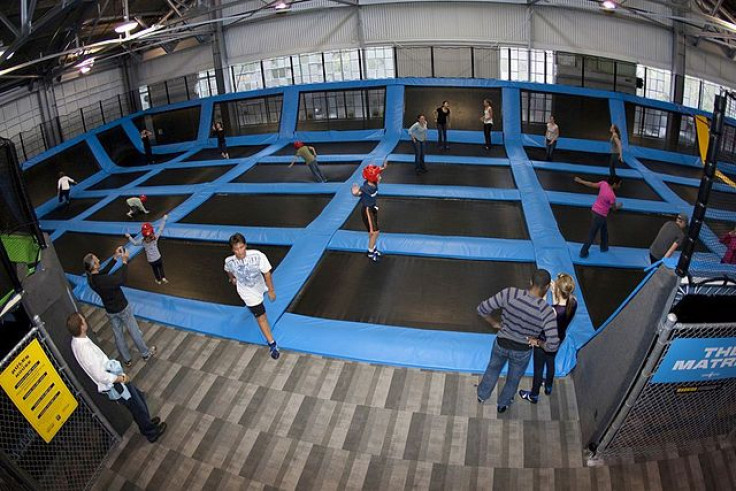Trampoline Parks Tied To Jump In Emergency Room Visits

(Reuters Health) - As trampoline parks are becoming more common in the U.S., so are emergency room visits for injuries that happen at these recreational facilities, a new study suggests.
“I don't think trampoline park injuries are increasing because they are especially dangerous compared to home trampolines, but rather because of their growing popularity and the increasing number/availability of these facilities,” said lead study author Dr. Kathryn Kasmire, a researcher at Connecticut Children's Medical Center in Hartford.
From 2010 to 2014, the average annual number of emergency room visits for trampoline injuries was close to 92,000. The vast majority happened at home - but injuries at trampoline parks surged more than 10-fold during the study period. In 2014, injuries at trampoline parks accounted for almost 7,000 emergency room visits, the study found.
Nationwide, the number of trampoline parks surged from about 40 in 2011 to 280 in 2014, researchers note in the journal Pediatrics.
An estimated five to six new parks open each month, and there were probably about 450 nationwide by the end of last year.
To assess how the surge in trampoline parks is influencing injuries, researchers examined data from a nationwide registry of injuries. They excluded data from gymnastics or competitive trampoline injuries, as well as from sports facilities that offer a variety of recreational sports rather than just wall-to-wall trampolines.
With home injuries, the average age was close to 12, about a year younger than the typical age of people hurt at trampoline parks, the study found.
Children ages 6 to 17 accounted for the majority of injuries at home and at trampoline parks.
Sprains and fractures were the most common trampoline injuries, regardless of location. But sprains were 61 percent more likely at trampoline parks.
Dislocated joints were more than twice as likely to occur at trampoline parks as at home, the study found.
At trampoline parks, fractures were much more common in younger children than in teens and adults, accounting for almost half of injuries for kids under 6. Younger children were less likely than older teens and adults to sustain sprains, however.
One limitation of the study is that researchers lacked complete data on the location of every injury, which the authors conclude may mean they underestimated the number of emergency room visits tied to trampoline parks.
Another shortcoming is the lack of data on how often people used trampoline parks, which made it impossible to calculate an injury rate based on the number of hours or episodes of participation, the authors also note.
Even so, the American Academy of Pediatrics recommends against recreational trampoline use due in large part to the injury risk. When trampolines are used for fun, kids should have constant adult supervision and adequate protective padding, and there should be just one jumper at a time, the AAP recommends. Kids should also avoid flips and somersaults, the doctors group advises.
“Trampolines were originally developed as a device for use by acrobats, gymnasts, fighter pilots, etc. – they were never intended to be used as a backyard toy,” said Dr. Gary Smith, lead author of the AAP recommendations on trampolines and president of the Child Injury Prevention Alliance in Columbus, Ohio.
“If a child would like to use a trampoline, it should be done at a gym with a trained instructor who can safely progress the child through maneuvers as the child gains skills,” Smith, who wasn’t involved in the study, added by email.
Even with supervision, trampoline parks might be more dangerous because kids have a better chance of crashing into each other, noted Dr. Sean Bandzar of Weill Cornell Medical College in New York.
“Trampoline parks may be inherently more dangerous because children are able to jump from trampoline to trampoline throughout the park and bump into other children,” Bandzar, who wasn’t involved in the study, said by email. “Research has suggested that approximately three-quarters of injuries occurred when multiple people were using one trampoline at a time.”
SOURCE: http://bit.ly/2acOShk Pediatrics, online August 1, 2016.



























